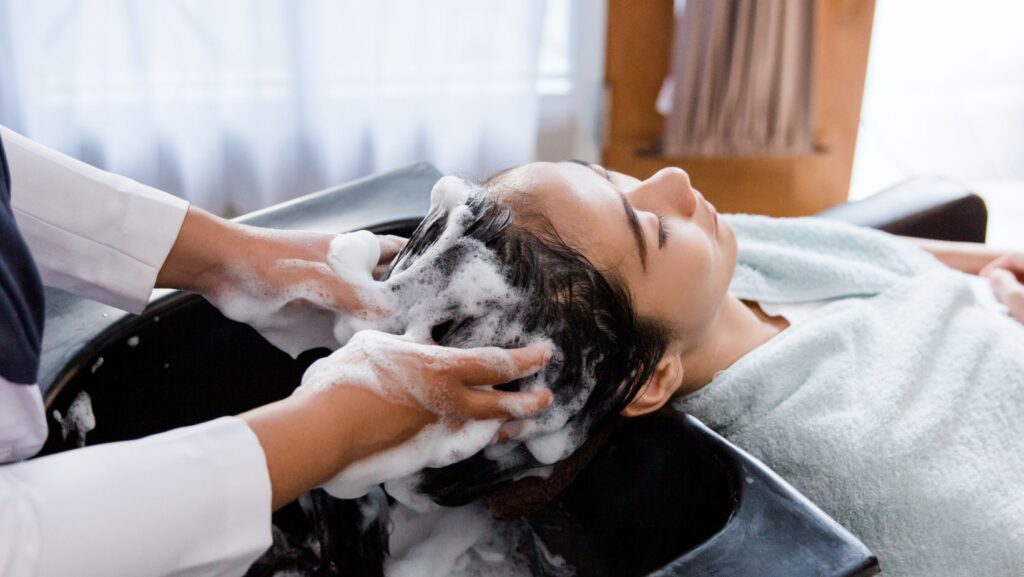
In the pursuit of beauty, many individuals turn to chemical hair relaxers to achieve sleek, straight hair. However, beneath the surface of these seemingly transformative products lie complex health implications that have garnered attention in recent years.
In this article, we will conduct a thorough examination of the potential risks associated with chemical hair relaxers. We will dive into both the scientific and legal aspects of their impact on our well-being.
Understanding the Chemistry of Hair Relaxers
Chemical hair relaxers rely on powerful formulations to transform curly or textured hair into a straightened state. According to Chemistry World, the primary active ingredient in these products is often a strong alkali, like sodium hydroxide or calcium hydroxide.
These alkalis break down the protein structure of the hair, specifically the keratin bonds, resulting in a temporary alteration of its texture.
While the chemical process is effective in achieving the desired straightening effect, it comes with inherent risks. The aggressive nature of these chemicals can lead to damage to the hair cuticle, weakening the strands and making them more susceptible to breakage.
Understanding the chemistry behind these transformations is crucial for individuals seeking straightened hair. This is because it allows them to make informed decisions about the potential impact on their hair health.
The Hidden Dangers and Health Risks
Beneath the allure of smooth, straight hair lie hidden dangers associated with the use of chemical hair relaxers. Numerous studies have linked these products to adverse health effects, ranging from mild irritations to more severe conditions. Scalp burns, hair breakage, and allergic reactions are common complaints reported by users.
NIH notes that research has also suggested a connection between chemical hair relaxers and serious health issues such as uterine and ovarian cancer. The chemical ingredients, when absorbed through the scalp, may enter the bloodstream, raising concerns about systemic health effects.
These hidden dangers underscore the importance of informed decision-making regarding hair care practices. Consumers must weigh the aesthetic benefits of chemical hair relaxers against the potential risks to their overall well-being.
Personal Injury Lawsuits
TorHoerman Law notes that individuals who believe they have suffered harm from chemical hair relaxers are increasingly seeking legal recourse. To pursue a lawsuit, one must be diagnosed with a qualifying condition, such as uterine or ovarian cancer, linked to hair relaxer use. The lawsuits often involve claims of negligence, product liability, and false advertising.

Navigating a hair relaxer lawsuit requires consultation with an experienced attorney, especially one who is well-versed in mass torts. The multidistrict litigation (MDL) process, involving a plaintiffs’ steering committee and various legal teams, adds complexity to these cases.
Drugwatch notes that there are 8,217 hair straightener lawsuits pending in MDL in the U.S. District Court of Northern Illinois. As more individuals file lawsuits, the legal landscape surrounding hair relaxers continues to evolve, potentially shaping future regulations and consumer protections.
Regulatory Gaps
The regulatory oversight of beauty products, including hair relaxers, raises concerns about consumer safety. Currently, regulatory frameworks often fall short, allowing potentially harmful chemicals to be used without adequate warnings.
Strengthening regulatory measures can contribute to preventing adverse health effects, promoting transparency in product labeling, and safeguarding consumer well-being. Advocacy for regulatory reform is crucial in addressing the evolving landscape of beauty product formulations and their potential health impacts.
Alternatives and Future Directions
Amidst the concerns surrounding chemical hair relaxers, empowering consumers with alternatives and information is essential. From heat-free styling methods to embracing natural textures, individuals can make choices that align with both their aesthetic preferences and health considerations.
Looking ahead, the beauty industry has an opportunity to innovate, developing products that prioritize both effectiveness and safety.
Consumer demand for transparency and safer alternatives may encourage the industry to reevaluate formulations and provide products that enhance beauty without compromising health. By making informed choices, individuals can actively participate in shaping the future of beauty standards and product safety.

In conclusion, the appeal of sleek, straight hair through chemical relaxers unveils a series of risks, from hair damage to potentially serious health issues. Legal actions highlight the evolving landscape of product liability, while regulatory gaps underscore the need for strengthened oversight in the beauty industry.
Empowering consumers with alternatives is essential, encouraging the industry to prioritize safety alongside effectiveness. As individuals make informed choices, they actively shape the future of beauty standards and product safety.
A balanced approach that considers both aesthetic preferences and health implications is critical for a holistic understanding and transformation of beauty practices.
